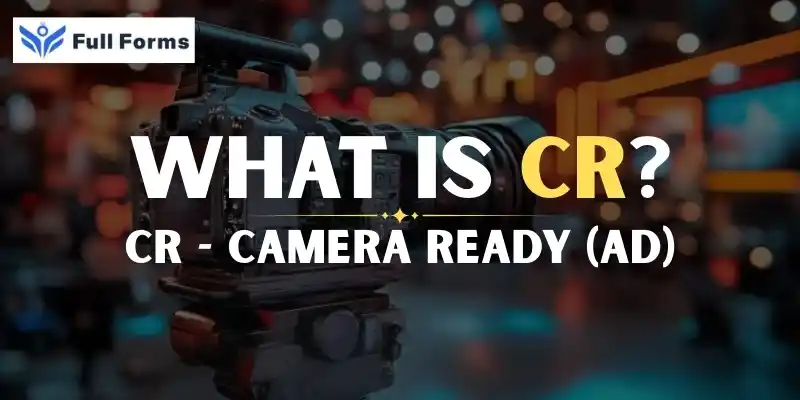Camera Ready (ad)
(CR)

Description
A Very Simple Guide for Advertising “Camera Ready”: What It’s All About
If you have worked with newspapers, magazines, or any print advertising, you probably heard of “camera ready.” What is “camera ready,” especially in ads? Here’s what it means in plain language so you can tell anyone.
What Does “Camera Ready” Mean?
In the advertising and publishing world, “camera ready” means an advertisement or piece of artwork that is completely finished and ready to go into the camera without requirement for further editing, correction, or adjustment by the camera person or printer for the file or art. It is ready indeed in every way for straight production.
This term has been used since the early days of printing when the final ad or page was photographed (with a camera) for creating the printing plates. Nowadays, it is all about digital files, but the concept remains; the ad is as it is—ready for publication.
Why Is Camera Ready Important?
The ad is camera ready: all ingredients, images, copy, colors, and layout are there. This saves time and prevents any confusion that may occur between the advertiser and the publication as to what exactly the ad is supposed to look like. If not camera ready, it will need re-shooting or changes being sent back, causing a waste of time and incurring extra cost.
Let’s consider, for instance, that a company wishes to publish a full-page advertisement in a magazine. If their ad is camera ready, that magazine can simply insert it into their layout and go for printing. If this is not the case, then they would have to correct things in the ad like blurry images, missing some of the fonts, or incorrect size. It will just delay the whole process.
What Makes an Ad Camera Ready?
- Size: The ad should be in the correct size specified by the publication so theoretically, it should be camera ready.
- Resolution: Images and graphics must be high resolution and clear, preferably 300dpi or higher so that would suffice for the camera ready.
- File Format: It should be in the proper file format that the publisher wants – in most cases it’s PDF, TIFF or EPS, hence camera ready.
- Embedded Fonts: All fonts are supplied with the file, or all text has been converted to outlines so no change of appearance will occur.
- Color Mode: The ad uses informed color setting; therefore, it uses CMYK color mode if it’s for a print ad, not RGB mode for on-screen use.
- Makes Another File: All pictures, logos, and text have been gathered and are fully included in the advertisement without needing another file or linked to another file.
- Trim and Bleed Marks: If an ad is going to fill the whole page, it should be noted that extra space (bleed) is provided, along with marks that indicate where the ad should be cut.
Preparation of Camera Ready Ads
Usually, the camera-ready advertisements are prepared by a graphic designer or an advertising agency. They develop a design using professional design software such as Adobe InDesign, Illustrator, or Photoshop. At times, this can also be done by the firm itself using publication-provided templates to ensure correct fitting of the advertisement.
If an ad isn’t camera ready, and is accepted for publication, the publisher shall usually contact the advertiser for corrections or supplement charge just to convert the ad into print-ready form. Common deficiencies are: Low resolution pictures which mean that the images are fine on the screen but appear blurry when printed; wrong ad size or orientation; missing fonts or images; colours that do not register properly. To avoid these problems, make sure you ask for the publication’s ad specs and guidelines in advance before designing your ad.
Camera Ready in the Digital Age
Originally derived from print, the term “camera ready” can also be applied in digital advertising. For example, online banners or social media advertisements specifically need to adhere to prescribed sizes, resolutions, and formats to appear accurately on sites and applications. A “camera ready” digital advertisement is simply one ready-to-be-uploaded piece, without any further work required.
Tips for Creating Camera Ready Ads
- Check size and resolution before starting out.
Here’s how to ensure the file is print-ready:
- Use images/logo in high quality.
- Double-check for spelling and grammar.
- File > Save As in the specified format.
- If it’s possible, ask the pub for a proof—probably a test print or digital preview.
Conclusion
“Camera ready” may sound like a technical term, but really it’s a finished ad – ready for the rest of the world to see. No more changes needed. Whether you’re advertising in print or online, giving camera ready files makes the process go much more smoothly, quickly, and often less expensively. When in doubt, discuss it with your designer or the publication to get your ad will look its best upon reaching your audience.
